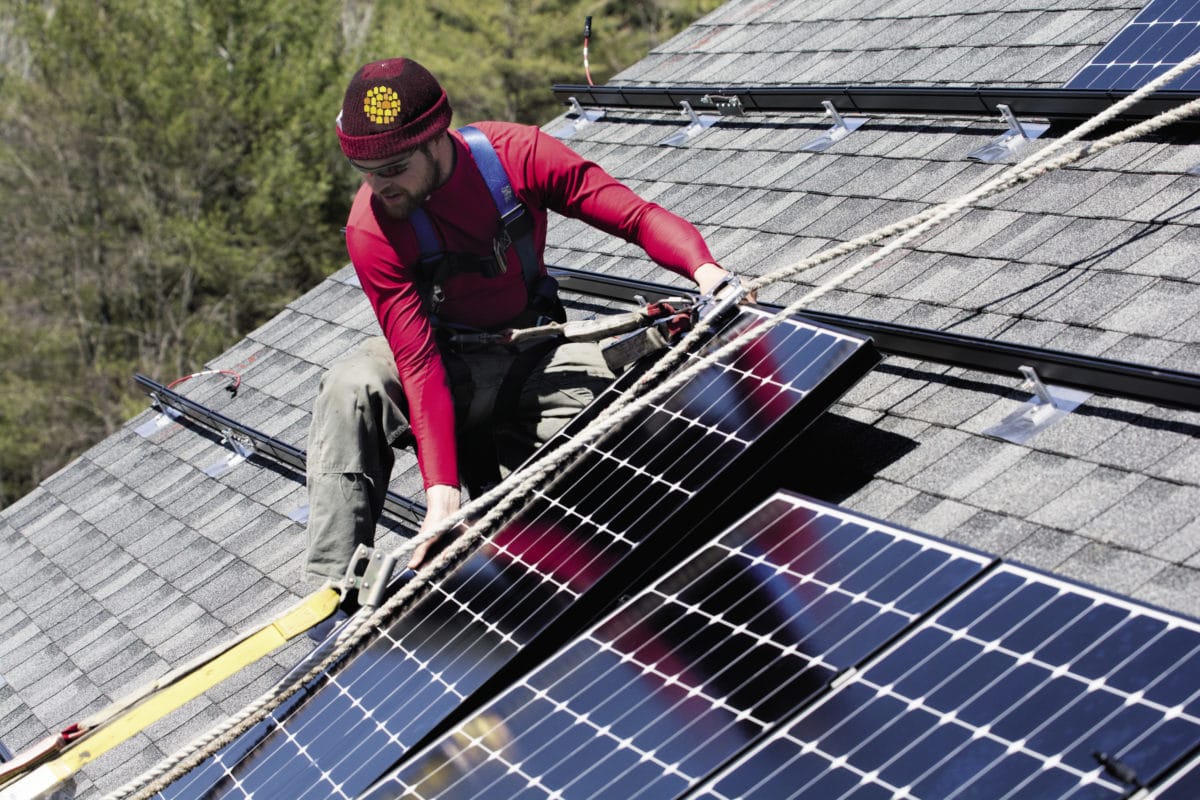Is energy storage as clean as we think? As battery storage applications grow, there has been increasing interest in the carbon emissions associated with those applications…there have been few studies to characterize emissions associated with battery usage in storage applications.
In order to do this, we can consider the Hornsdale Power Reserve as an example. It is powered with lithium-ion batteries. In order to do a life cycle assessment of this project’s carbon dioxide emissions, we need to consider 1.) Emissions associated with building the batteries; 2.) Emissions associated with charging and discharging the batteries during normal operations; and 3.) Emissions associated with recycling or disposing of the batteries. Read more: Oilprice.com, author: Robert Rapier
FERC rules clean energy must pay higher market price in New York: Acore, in a release: “FERC delivered a new subsidy to the fossil fuel industry today at the unfortunate expense of New York ratepayers. So called ‘Expanded Buyer-Side Mitigation’ measures directly conflict with policies New York expressly designed to accelerate the transition to pollution-free, renewable power.”
FERC “issued a suite of orders that will require subsidized energy storage and renewable power resource providers to meet a price floor in New York state’s capacity market, making it harder for them to compete with fossil fuel plants. The move, which environmental groups said effectively bolsters fossil fuel generators by forcing renewable resource providers to pay a premium in the capacity market, follows a similar FERC order in December that applied to PJM Interconnection, the largest U.S. power grid operator.” Source: Reuters
Loopholes in the California solar mandate: In a precedent-setting decision, state energy officials Thursday approved a controversial request by Sacramento’s electricity company to allow home builders and buyers an alternative to the state’s 7-week-old rooftop solar panel mandate. California Energy Commissioners gave the Sacramento Municipal Utility District unanimous clearance to offer builders the option of buying solar energy from SMUD, via local solar farms SMUD would build, rather than install solar panels on new-home roofs.
SMUD…argues its proposed Neighborhood SolarShares Program will aid builders of homes or low-rise apartments who find it too expensive or unworkable to mount solar panels on roofs. Read more: The Sacramento Bee
pv magazine goes into more detail on the SMUD solar mandate issue here.
Questions about impact of 30 MW solar project in New Hampshire: The 30 MW Chinook Solar project, developed by NextEra Energy, could be New Hamphire’s largest solar project. Local reporting finds citizens with concerns about noise, wildlife and job creation.
Dana Valleau, an environmental specialist and consultant to NextEra Energy said, “The arrays will be spaced widely enough that larger wildlife can move through. For smaller wildlife…we have designed a fence with a six inch gap underneath it so smaller wildlife can pass underneath the fence and traverse the area.” Read more: New Hampshire Public Radio and The Keene Sentinel | pv magazine has covered wildlife-friendly solar fencing, happy solar tortoises and Tinder for solar-curious sheep.
A compromise has been reached on net metering in Iowa: A compromise has been reached on net metering in Iowa after a contentious session pitting Iowa utilities against clean power boosters and farmers. “The agreed-to amendment grandfathers in existing private solar and maintains net metering.” A value-of-solar assessment will kick in when PV reaches 5% of the state’s total power. Source: The Courier
This content is protected by copyright and may not be reused. If you want to cooperate with us and would like to reuse some of our content, please contact: editors@pv-magazine.com.








By submitting this form you agree to pv magazine using your data for the purposes of publishing your comment.
Your personal data will only be disclosed or otherwise transmitted to third parties for the purposes of spam filtering or if this is necessary for technical maintenance of the website. Any other transfer to third parties will not take place unless this is justified on the basis of applicable data protection regulations or if pv magazine is legally obliged to do so.
You may revoke this consent at any time with effect for the future, in which case your personal data will be deleted immediately. Otherwise, your data will be deleted if pv magazine has processed your request or the purpose of data storage is fulfilled.
Further information on data privacy can be found in our Data Protection Policy.